Today we are comparing two of the Lidar-guided robot vacuums, the Roborock S5 Max and Xiaomi Mi Robot Vacuum Mop P (Mijia P). Both look very similar on paper yet when testing the difference is showing. Both robots create a map of the cleaning area, both are vacuum&mopping hybrids. Let’s have a closer look at the two and see what are the difference between the two.
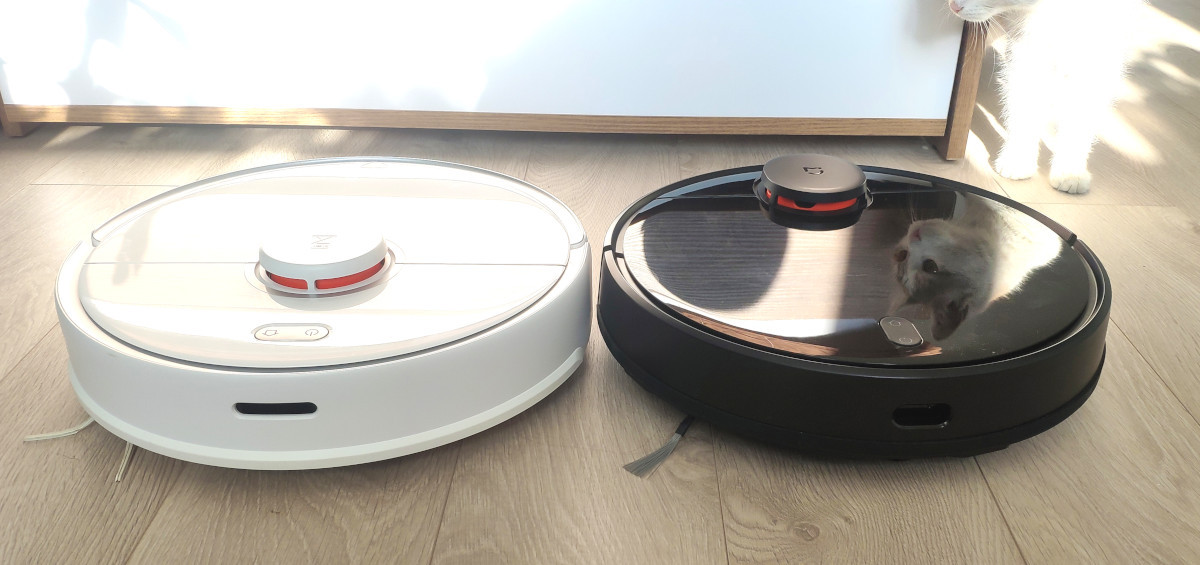
Design and Appearance
The two look similar yet different.
The accessory kit for each robot is different. For example, the Roborock comes with a waterproof mat when the Xiaomi includes two types of mopping cloths. Both have two containers, the Roborock has two separate for water and dust, the Xiaomi has one dustbin and a 2-in-1 that holds water and debris too. It also includes a spare side brush.
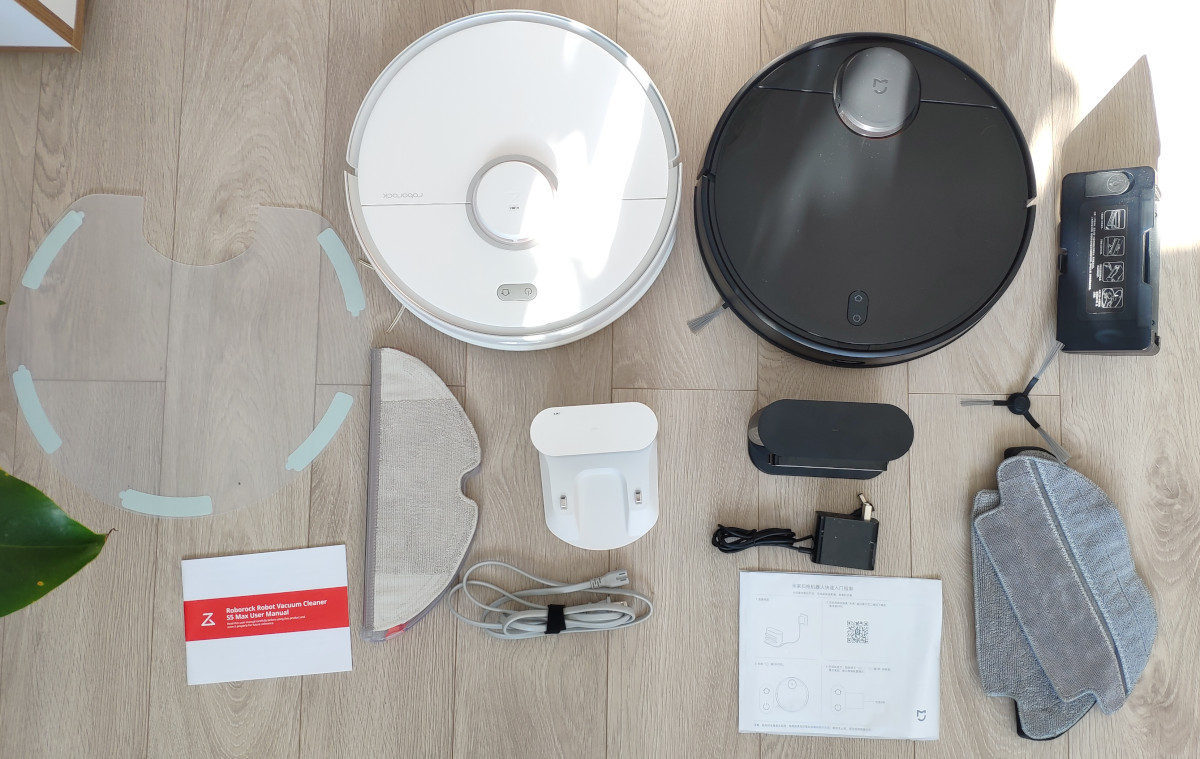
The side brush of the S5 Max is made of silicone when the Mop Pro uses a standard sweeper.
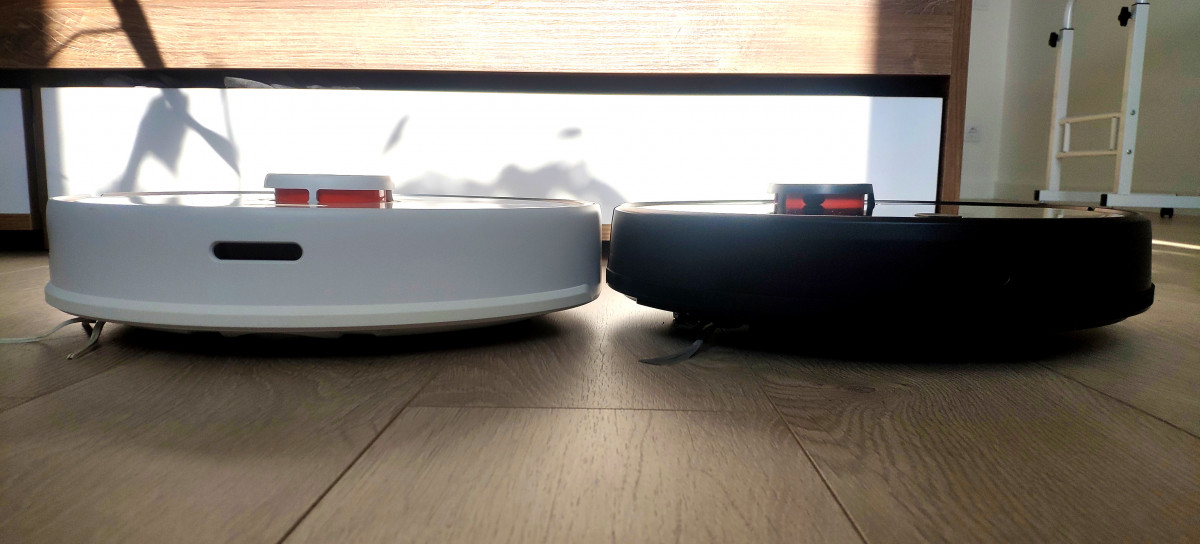
Under the lid, both look similar.
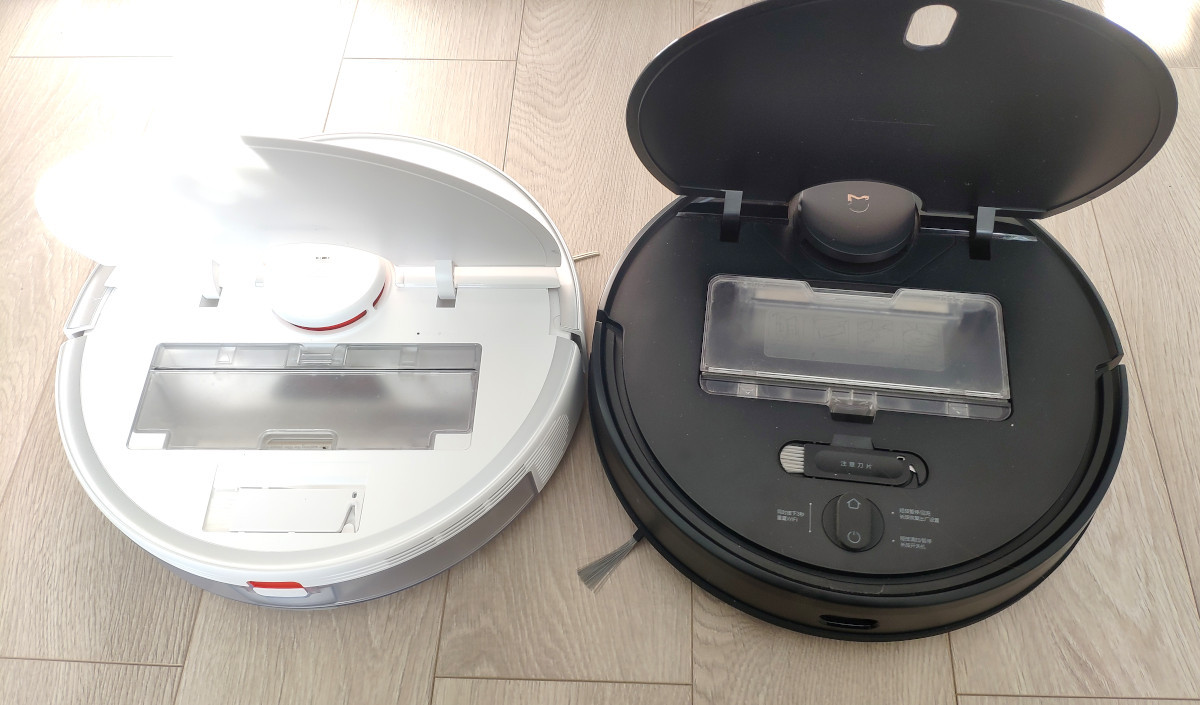
The cleaning brush of the Roborock sits on the center of the robot when the Xiaomi is built differently. Because the Xiaomi’s roller being closer to the front part, it does not do well on carpets.
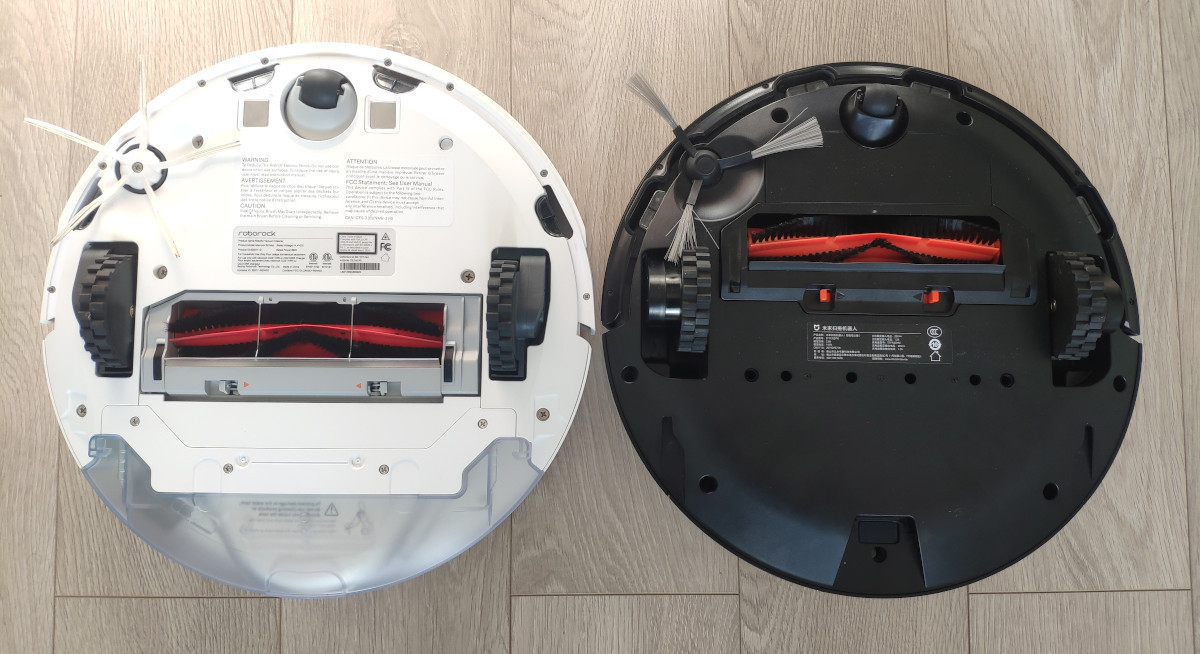
The wheels look the same too.
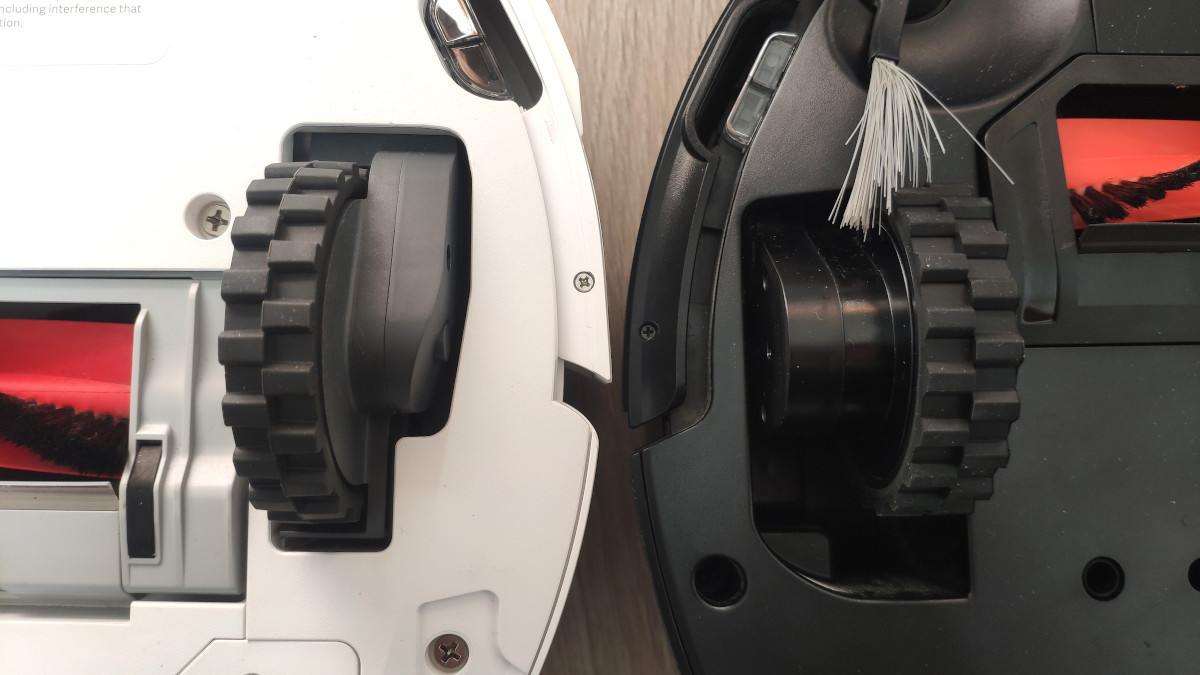
The water tank of the S5 Max is always attached as well as the dustbin. With the Xiaomi, you have to switch between the tanks depending on the cleaning tasks.
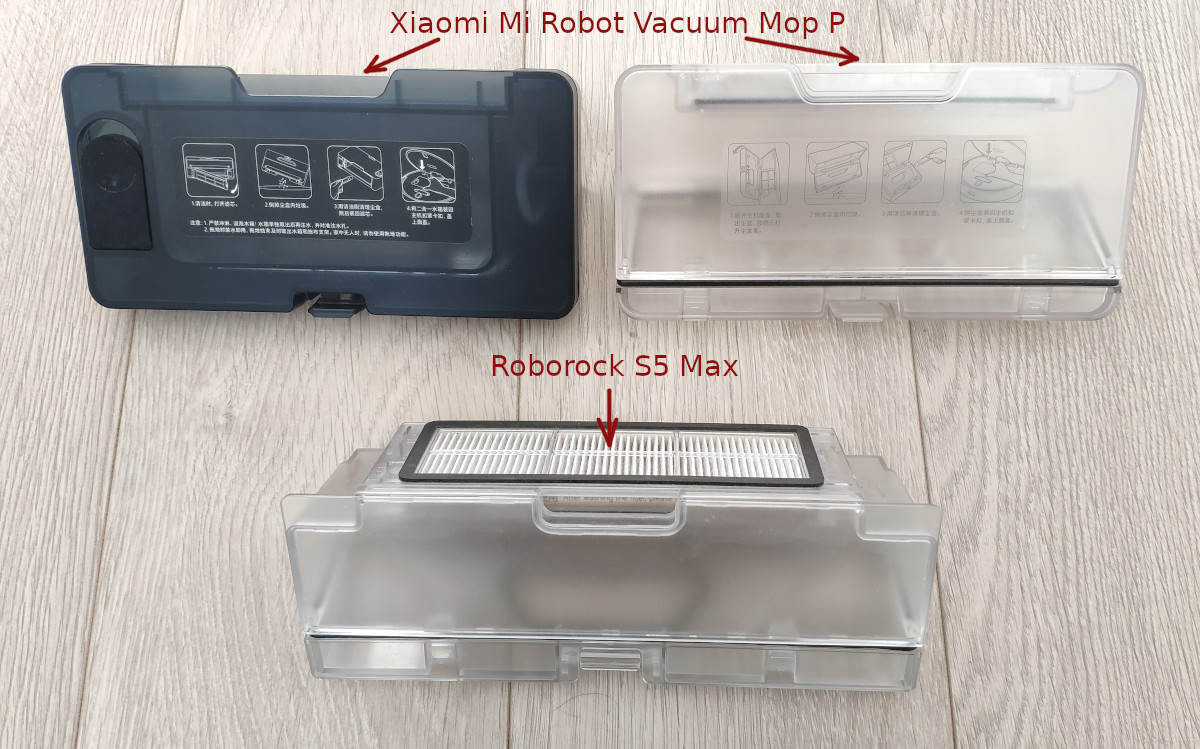
The Xiaomi has two types of mopping cloths. The Roborock has one.
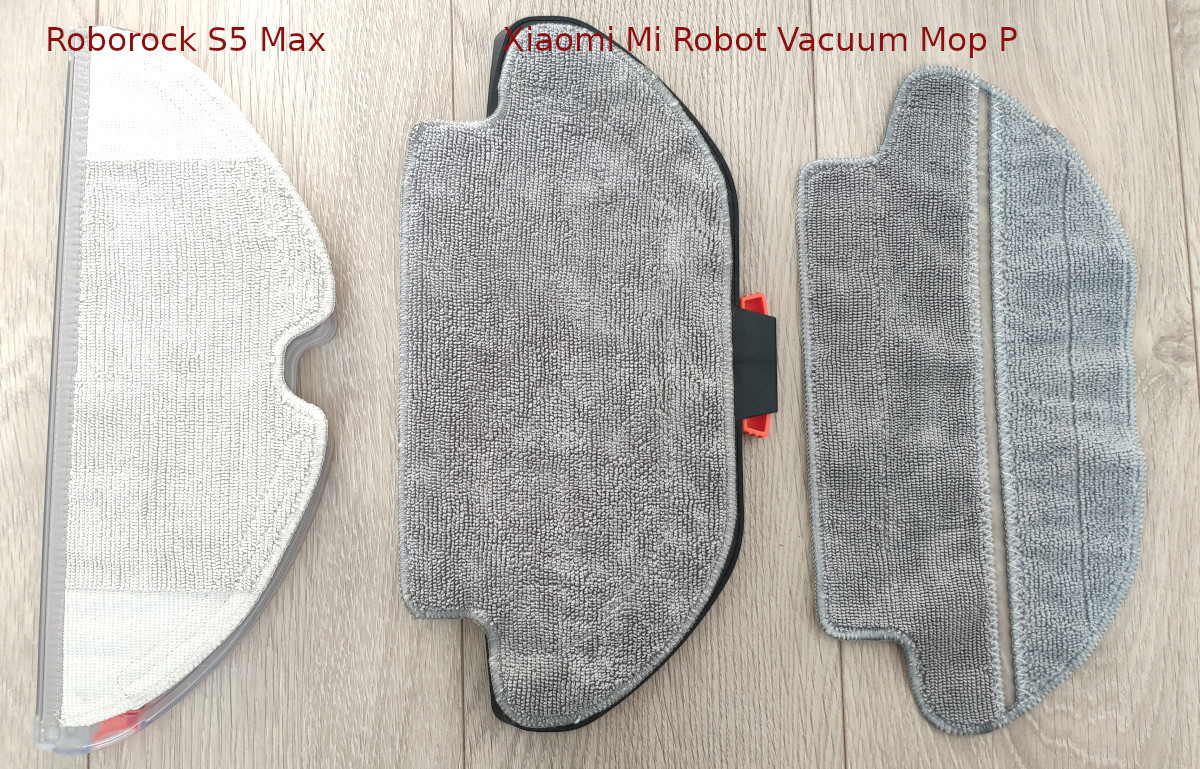
The cleaning brushroll does make a difference for pet owners and also those who have long hair. The S5 Max brushroll has more bristles and its side tips are detachable. That makes cleaning it off hair much easier.
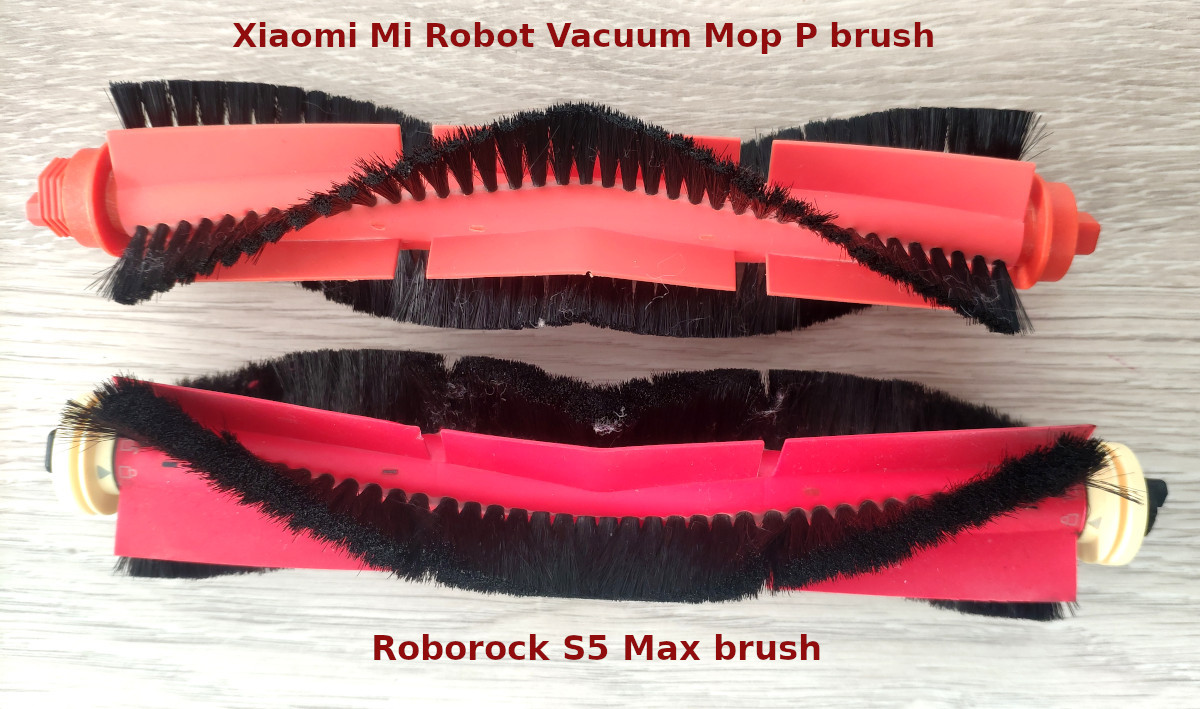
Navigation & Mapping
The Roborock and Xiaomi robots are guided by Lidar. The LDS sensor located on top scans the surroundings helping the robot to understand better where to clean.
Aside from the LDS sensor, the robots are equipped with other sensors that help them to navigate around. The Roborock has more sensors and is more precise with things and obstacles. It also finishes cleaning faster than the Xiaomi. Both robots follow a back-and-forth cleaning pattern methodically covering a cleaning area. The map helps not to miss a spot. Once the map is complete (Lidar-guided robots need one cleaning cycle to create a map), the robot automatically divides it into separate sections (rooms). Further on, you can send the robot clean a particular room or a few. After naming the rooms, the Roborock can be send to clean a particular room by using voice commands. Room cleaning voice commands is only supported by a Roborock.
Based on my experience with the two, the Xiaomi bumps into things harshly, it might not notice some obstacles, unlike the Roborock that is more gentle with things.
Vide review: navigation, cleaning tests, app features
Cleaning performance
The difference between the two is:
- battery life (120 min vs. 180 min)
- carpet boost. The Roborock automatically boosts suction on carpet.
- cleaning brushroll. The Roborock cleaning brush has detachable tips that help to remove clogged hair that mostly tends to wrap around the edges
Because of having a smaller battery, the Xiaomi is not suitable for big homes. The Xiaomi takes longer to cover my place. Its speed is around ~1.2 m2 (12.9 sqft) per minute. The normal speed for the robot is ~1 m2 (10.7 sqft). Max mode drains the battery faster which means if you live in a 120 sq m (1290 sqft) house the Xiaomi might need to recharge before finishing cleaning. Take into account that it does not have carpet boost that makes the battery life more efficient.
I tested both robots on hard floor, low and medium-pile carpet with sand and debris.
Hard Floor debris & sand test
On hard floors with debris, both did well so it's hard to spot a difference. The Mop P scored 99.2 % and the Roborock finished with 99.5 %. The difference was noticeable with the sand test. Sand is heavier and harder to pick up. The Mop P did significantly better scoring 97.2 % with the Roborock being behind picking up 89.7 %.
I assume the filtration of both robots is different which causes such results. The Mop P has a layer over the filter that prevents it from getting clogged. The Roborock has one filter only that gets clogged in no time when the robot removes ultra-fine things like sand or flour. The clogged filter leads to decreased suction so cleaning the filter is very important especially if you deal with dusty areas.
Low-pile carpet with debris + deep clean test
On carpet, the Roborock S5 Max shines. Sand test made things clear for both. After the Roborock, I couldn't see sand on the carpet. It was hidden away but at the first sign no chance to see what's left. After the Mop P, a few roads of sand left on the carpet. The S5 Max scored 82.4 %; the Mop P, 44.4 %.
As to debris pickup on the thin carpet, the Roborock did a bit better (99.1 %) but not that much to spot the difference between the two on a daily basis. The Xiaomi scored 96.8 %.
Medium-pile carpet cleaning test
On a medium-pile carpet, the Roborock S5 Max and Mop P scored 97.3 % and 92.9 % respectively.
On carpet, the Xiaomi pressures to the floor with the front part so the half of the robot lifts up. Because of that suction is not enough to pick up things as there is no pressure between the robot and carpet. I believe this causes worse performance on carpet.
Hair test
The Roborock is essential for those who have long hair. The cleaning brush has detachable tips and is easy to maintain. After testing it with hair on a medium-pile carpet, the Xiaomi did not pick up almost any of the hair while the Roborock cleaned the area well having about 50/50 around the brush and in the dustbin.
To sum up the cleaning results
The Roborock S5 Max does better on carpet and hard floors for as long as it doesn't have to deal with a big amount of ultra-fine dust. It is also much better with pet and long human hair.
Because of having an extra layer on the filter, the Xiaomi Mop P does better with ultra-fine dust on hard floors and overall is good on hard floors.
Mopping
The mopping system is slightly different. The Roborock has a separate water tank and dustbin; the Xiaomi comes with two containers, one for dust and the 2-in-1 dustbox + water tank. Additionally, the Roborock comes with a water-proof mat that prevents the floors from damaging as the robot is docked.
The Xiaomi can either work as a mop, a vacuum and mop, and a vacuum while the Roborock does not allow shutting off suction. The water tank is electronic which means it allows setting water flow levels in the app. The S5 Max's water tank is bigger tho.
As to cleaning performance, the Mop P does a better job. It allows choosing between the Y and Z-shape in mopping mode. The Y-shape performs better as the robot takes twice as long to clean the same area. On the other hand, with the Roborock, you can set water flow level for every room.
It was clear in our mopping tests, the Mop P performs better than the S5 Max tho I still think the Roborock S5 Max is one of the best 2-in-1 robots on the market.
As to ease of use, I prefer the Roborock. The Xiaomi leaks sometimes so I have to remove the water tank right after the robot finishes mopping. With the Roborock, I don't have to worry much about removing the water tank as the water-proof mat prevents my floors from damaging.
Battery life
This is where the Roborock shines. It has a large battery and is suitable for big houses. The Xiaomi's battery is smaller so the robot runs up to 120 minutes on low power settings.
Both have a resumption feature which means the robot resumes cleaning after powering up if it didn't finish cleaning on one charge. The Xiaomi powers up to 80% when recharging before going to resume. The Roborock calculates how much power it needs to finish the job. It takes less time for the Roborock to charge.
The app
Both robots support the Mi Home app, the Roborock also can work with the Roborock app. Aside from the main features like stopping and starting the robot, there are a few advanced options:
- No-Go zones. Keep the robot off certain areas.
- No-Mop zones. Active only in mopping mode. Keep the robot off carpets and become inactive once the mopping pad is removed. Supported by the Roborock only.
- Zoned cleaning. You can customize where the robot should clean.
- Room select. Both can be ordered (and scheduled) to clean a specific room.
- Multimap support. The Roborock can store up to 4 floor maps. The Xiaomi stores up to three but not all modifications. Some that were made for a certain market only save one map.
- Set a cleaning mode
- Set a water flow
- Mopping only settings. You can shut off suction for the Xiaomi and let it work as a mop only. Only supported by the Xiaomi.
- Schedule settings. The Roborock has advanced settings for scheduling. It allows choosing cleaning modes and water flow settings for every room. With the Xiaomi, you can select the room (whole house) to clean and one cleaning mode. Unlike the Roborock, with the Xiaomi, you can set vacuum, mop, or vacuum & mop mode.
- You can name the rooms in the Mi Home and Roborock apps.
With the Xiaomi, you can select from two mopping paths: Y-shaped and Z-shaped. The Y-shaped path does the job better but it also takes longer to do the job. The Roborock follows a back-and-forth Z-shaped path.
The Pin & Go setting. It allows tapping on the map where you want the robot to go instead of manually controlling the robot.
Software & Firmware updates
The Roborock regularly receives updates. Since I own the Xiaomi Mi Robot Vacuum Mop Pro, I received one update only (a year ago).
Related posts
Roborock S5 Max vs. Xiaomi Mi Robot Vacuum Mop Pro: which one is better
The Roborock S5 Max has a higher price tag. It does a better job on carpet but is not as good on hard floor with sand as the Xiaomi. It also has a bigger battery and is suitable for large homes.
On the other hand, the Xiaomi Mi Robot is a better mop. It does not do well on carpet but on hard floor, the robot is flawless. If you do not have carpets and look for something with Lidar yet not too expensive, the Mi Robot is probably best in class.
For those who need more options, convenient usage and ready to spend more, consider getting the Roborock S5 Max.